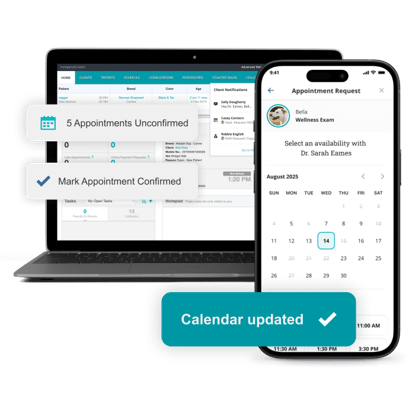Managing Expectations: Setting Clear Veterinary Client Communication Guidelines

Managing client expectations is crucial to building trust and ensuring satisfaction in veterinary practice. Without clear guidelines regarding protocols and timelines, clients may set a mental bar that the veterinary team cannot possibly reach. Letting clients know early in their relationship with the practice precisely what they can expect from the team, and what is expected of them, helps minimize misunderstandings.
Veterinary professionals spend much of their day communicating with clients in various capacities, sometimes regarding emotionally charged topics. Ensuring clients and the veterinary team each follow the same rules of engagement can reduce the potential for communications to go awry. Here are some practical strategies to help veterinary professionals establish communication guidelines with clients and ensure their teams can meet or exceed pet owner expectations.
Set expectations early in the client relationship
Set the tone by establishing communication guidelines at the outset of the client relationship. During the first visit, explain your practice’s communication protocols or ask the client to review and sign a document outlining preferred contact methods and expected response times. Whenever possible, send clients documents electronically ahead of time.
Use technology for efficient client communication
Leveraging technology can help set expectations and streamline communications. Veterinary software with integrated client communication features enables teams to automatically welcome new clients with the necessary information, and get them up to speed more quickly. Once clients are established, digital communication platforms and mobile applications offer convenient contact options, and auto-replies can remind clients of expected response times and what to do in urgent situations. Also, a mobile app can offer easy access to medical records, scheduling tools, treatment plans, and updates that reduce the number of practice-client communications.
Implement structured follow-up procedures
Most clients expect prompt test result follow-ups or after-visit check-ins. During the visit, let clients know how long test results typically take, how they will receive the results, and what to do if they have questions or concerns. Hospitals should also implement these procedures so follow-ups don’t fall through the cracks. This looks different for every team but may include automated reminders generated by veterinary practice management software or a review of daily follow-ups by a designated team member.
Address costs and financial concerns
Discussing costs and billing procedures upfront can prevent misunderstandings and build client trust. Open a dialogue with pet owners with detailed estimates for recommended services, including alternative treatments. Offering several treatment plans and discussing payment options, including third-party financing, supports a spectrum of care and shows that the hospital is interested in overcoming financial barriers.
Don’t forget about emergencies
Emergencies are stressful for pet owners and the veterinary team. Whether or not a pet’s issue is truly urgent, a client’s perception of urgency can mean tense interactions with the team. Ensure your initial client visit or welcome forms include your emergency procedures, including on-call phone line availability, clinic emergency hours, and team contacts when their pet needs emergency or urgent care.
Use empathy and active listening
Effective communication is not only about sharing information, but also listening. Practice active listening, so you can meet your clients’ expectations of being heard and understood. During conversations, reflect on the client's words to confirm your understanding and ask them to summarize what you have told them. Use empathy when clients express concerns or when discussing sensitive topics.
Set firm boundaries with clients
All clinics will deal with upset or emotional clients who may become verbally abusive. Clients must understand that your practice has zero tolerance for abusive or violent behavior toward any team member and the consequences. Post notices at the front desk, in exam rooms, and on your website that explains your policy and shows clients that the practice values their employees’ well-being. Training key team members in de-escalation techniques is also vital for defusing tense situations.
Setting expectations early and often and communicating clearly can help veterinary practices build stronger relationships with pet owners. Expectations are a two-way street, however, and clients should also understand how to communicate with the practice and what to expect from veterinary team members. Leveraging technology, creating financial transparency, showing empathy, and setting boundaries can create a mutually agreeable environment where pets, pet owners, and veterinary professionals work together to improve pet health.




